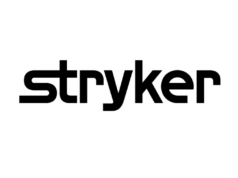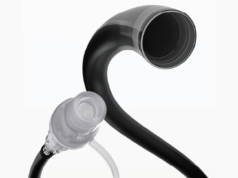
Results of PRONOMOS, a randomised, controlled, noninferiority trial, have shown rivaroxaban to be more effective than enoxaparin in the prevention of major venous thromboembolic events, during a period of immobilisation after non-major orthopaedic surgery of the lower limbs. The findings of the investigation were presented at the American College of Cardiology/World Congress of Cardiology’s virtual scientific sessions (ACC.20/WCC Virtual)—originally scheduled to take place on 28–30 March in Chicago, USA.
Also published in the New England Journal of Medicine (NEJM) alongside the sessions, study authors note that this type of surgery of the lower limbs, which can often result in transient reduced mobility, places patients at an increased risk of venous thromboembolism (VTE).
“We must prevent VTEs in these patients because some can lead to pulmonary embolism, which can be fatal,” said Nadia Rosencher (Paris University, Paris, France), one of the study authors. “This study represents a major step forward in our treatment of patients after many orthopaedic procedures, because it proves that we can more effectively prevent thrombosis with a once-daily oral medication versus a daily injection with the same safety.”
Presenting as part of ACC.20/WCC Virtual, Rosencher (Hopital Cochin, Paris, France) emphasised that there remains a lack of consensus on the use of thromboprophylaxis in these patients. For example, although the US guidelines do not consider routine mechanical or pharmacologic prophylaxis to be required, European guidelines recommend a personalised strategy with low-molecular-weight heparin, in patients with one or more risk factors.
“In Europe, all the guidelines agree that some level of thromboprophylaxis should be given, but overall there is no agreement on what should be done for the patient population who remains at moderate risk for clots because of being immobilised during their recovery,” Rosencher said. “In many ways these data are a win-win for patients—a pill with no jump in major bleeding events.”
The study aimed to test the hypothesis that rivaroxaban may be noninferior to enoxaparin, with regard to the prevention of major VTE, and is the first trial of its kind to do so. Conducted internationally, across 200 centres in 10 countries, PRONOMOS saw patients undergoing lower-limb non-major orthopaedic surgery, who were also considered to be at a high risk of VTE, assigned to treatment with either rivaroxaban or enoxaparin.
In terms of an efficacy outcome, the primary endpoint of major VTE was a composite of symptomatic distal or proximal deep vein thrombosis (DVT), pulmonary embolism, and VTE-related death during the treatment, as well as asymptomatic proximal DVT at the end of treatment. It was also specified that if noninferiority was demonstrated for the primary outcome, a superiority test would then be performed.
Furthermore, pre-specified safety outcomes of the trial included major bleeding—defined as fatal, critical, or clinically overt bleeding, or bleeding at the surgical site requiring intervention—and non-major clinically relevant bleeding.
During her presentation, Rosencher revealed that a total of 3,604 patients underwent randomisation, with 1,809 assigned to the rivaroxaban group and 1,795 assigned to the enoxaparin cohort. Overall, patients experienced a median of 28 days of reduced mobility—one third were immobilised for one to two months, and two thirds had to restrict activity for two weeks and up to one month.
Detailing the results, she explained that major VTE occurred in 0.2% of the 1,661 intention-to-treat (ITT) patients (n=4) who received rivaroxaban, compared to 1.1% of the 1,640 ITT patients (n=18) in the enoxaparin cohort (risk ratio, with multiple imputation, 0.25; 95% confidence interval [CI], 0.09–0.75; p<0.001 for noninferiority; p=0.01 for superiority).
Shifting focus to the incidence of bleeding across both groups, no significant difference was found. The rate of major bleeding or non-major clinically relevant bleeding was 1.1% and 1% for the rivaroxaban and enoxaparin groups, respectively, and 0.6% and 0.7%, respectively, for just major bleeding. There were no deaths in either arm except one that occurred at the end of study follow-up and after a liver transplant.
There were limitations to PRONOMOS, as highlighted by Rosencher, which included the premature discontinuation of enrolment that meant there was a smaller sample size than planned. Additionally, no information was collected on patients who failed to meet the screening criteria, nor were the results generalisable to older patients as, overall, the population studied was relatively young and healthy.
As well as this, the trial did not include a placebo group, resulting in no data on event rates in a population who did not receive prophylaxis. Speaking to Venous News on this point, Rosencher added: “Before the PRONOMOS study, we performed a meta-analysis in this field and demonstrated that low-molecular-weight heparin decreases the risk of symptomatic VTE without increasing risk of bleeding. That is the first reason to avoid placebo group, the second reason is that ethical committees in Europe will not accept a study with a placebo group in this kind of surgery.”
“We saw a high number of patients in the low molecular weight heparin group with proximal asymptomatic DVT by compression ultrasounds, and these are quite dangerous as they can lead to pulmonary embolism that carries a high death toll,” Rosencher stated, concluding her presentation. “We expect to see expanded indications for rivaroxaban in other patients based on these data.”
Rivaroxaban is currently approved by the US Food and Drug Administration (FDA) to prevent DVT that may lead to a pulmonary embolism after elective knee or hip replacement surgery; in some countries, it has a broader label to include use after lower-limb orthopaedic surgery.












